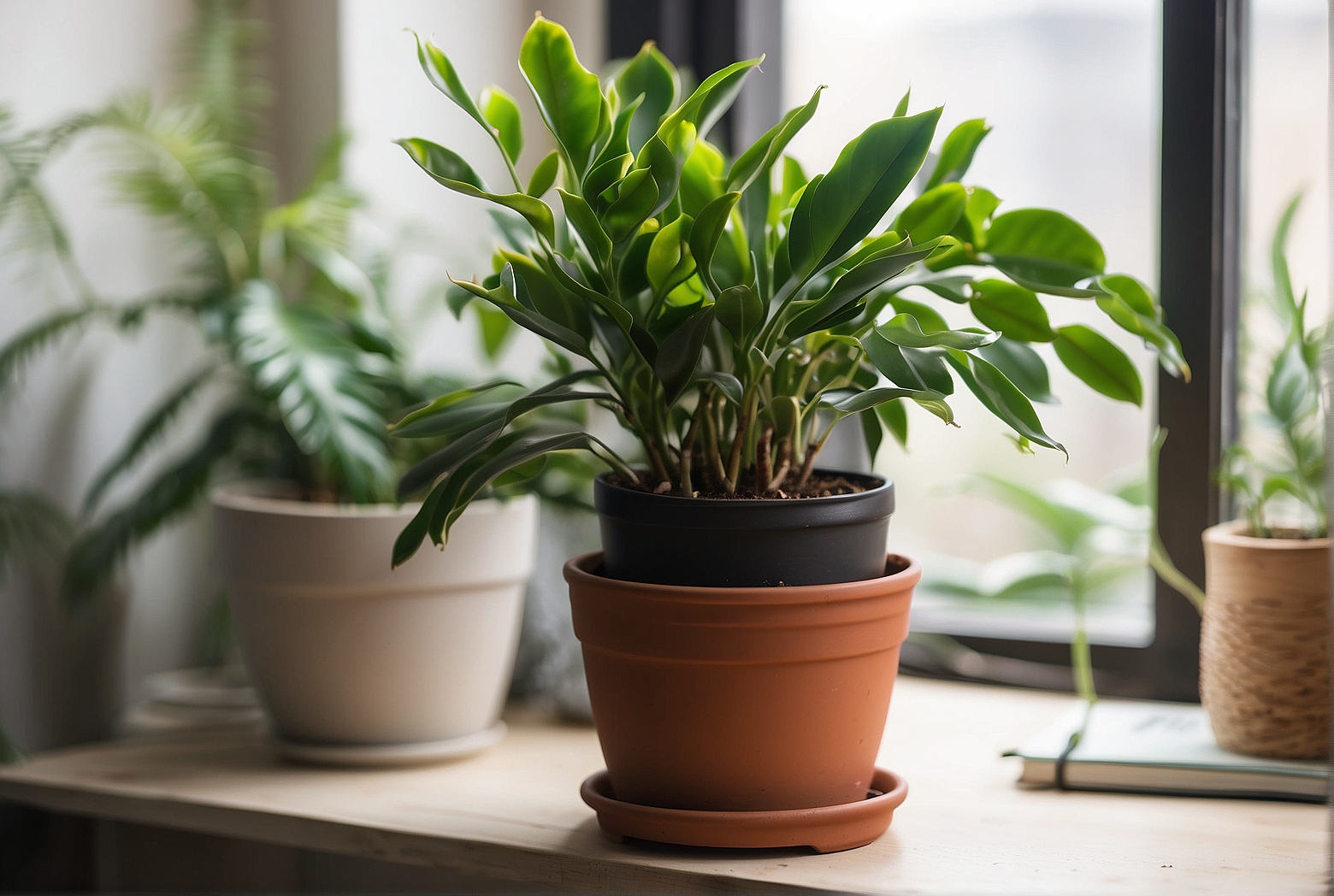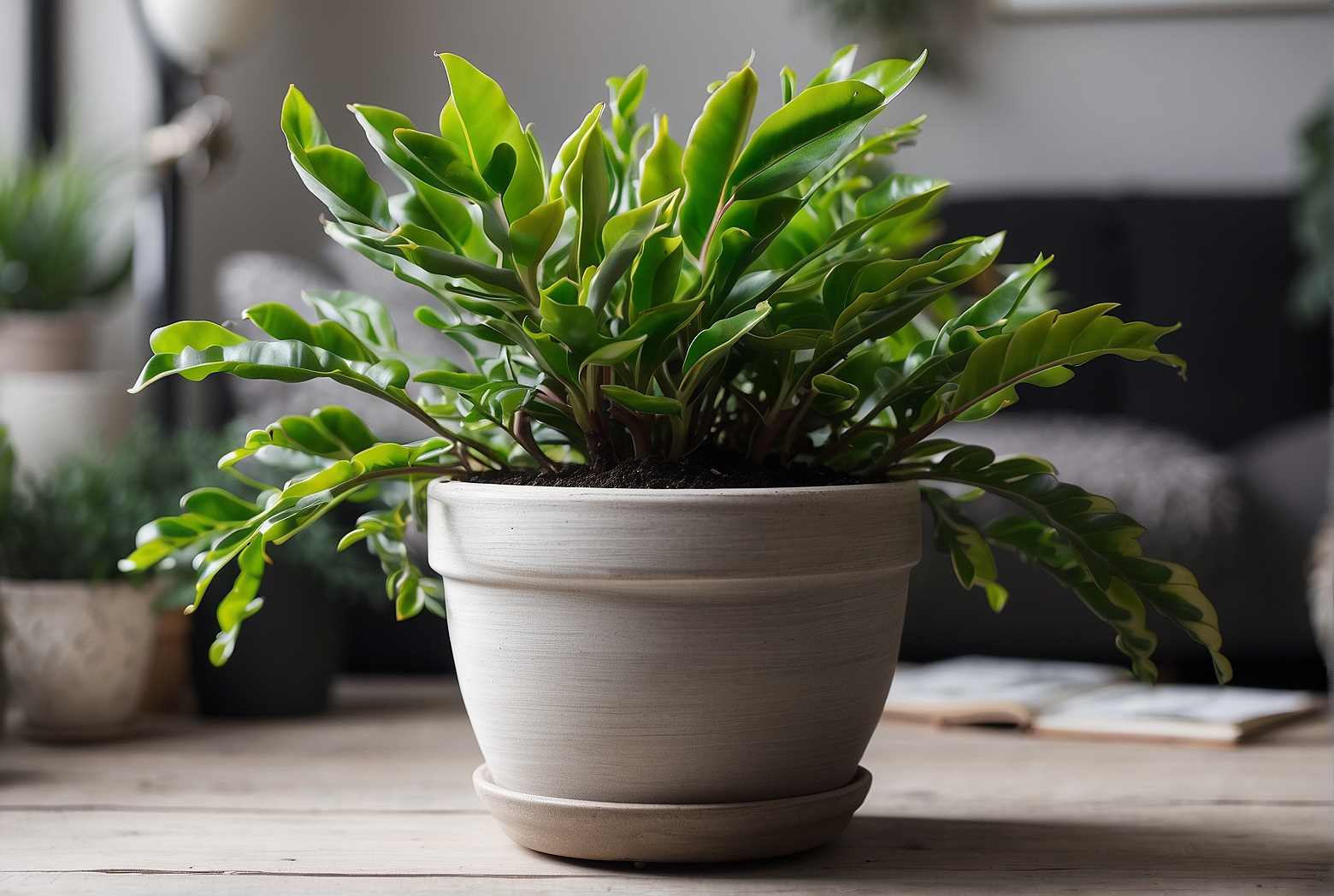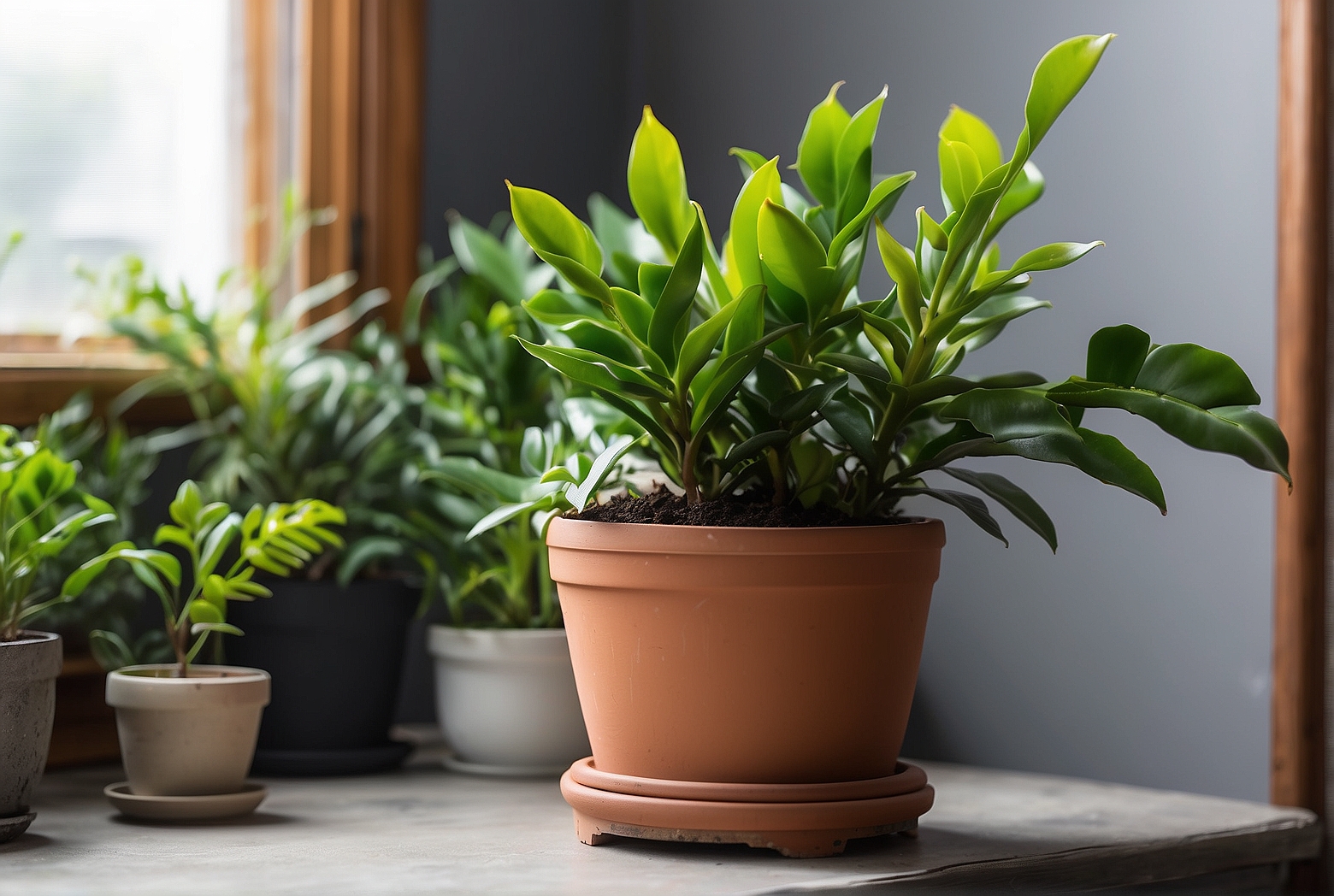Last Updated on April 5, 2024 by Tony Manhart
Are you puzzled by the sight of your ZZ plant drooping? Don’t worry, you’re not alone! It can be disheartening to witness your once thriving and vibrant plant lose its perkiness. In this article, we will explore the common reasons behind why your ZZ plant might be drooping, and provide you with valuable tips to help revive its health and beauty. So, if you’re eager to restore your ZZ plant to its former glory, read on to uncover the secrets to a happy and upright plant.
Watering Issues
Overwatering
Overwatering is a common issue that can cause your ZZ plant to droop. When you water your plant too frequently or give it too much water at once, the roots may become waterlogged, leading to root rot. This can prevent the roots from absorbing nutrients and oxygen properly, causing the plant to droop. To avoid overwatering, make sure to check the moisture level of the soil before watering. ZZ plants prefer to dry out between waterings, so allow the top few inches of soil to dry before watering again.
Underwatering
On the other hand, underwatering can also cause your ZZ plant to droop. When you don’t provide enough water to your plant, the roots may become dehydrated and unable to support the plant’s foliage. This can result in drooping leaves. To prevent underwatering, check the moisture level of the soil regularly. If the top few inches of the soil feel dry to the touch, it’s time to water your ZZ plant. Make sure to water thoroughly, allowing the excess water to drain out of the pot.
Lighting Problems
Insufficient Light
ZZ plants thrive in bright, indirect light. If your plant is not receiving enough light, its leaves may start to droop. Insufficient light can affect the plant’s ability to photosynthesize and produce energy, leading to weakened stems and drooping foliage. To address this issue, place your ZZ plant in a location where it can receive bright, indirect light for several hours each day. Avoid exposing it to direct sunlight, as this can scorch the leaves.

Excessive Light
While ZZ plants prefer bright, indirect light, too much direct sunlight can also cause their leaves to droop. Excessive light can lead to leaf burn, where the leaves become discolored and damaged. To prevent this, ensure that your ZZ plant is not placed in direct sunlight for extended periods. If you notice signs of excessive light, such as browning or yellowing leaves, consider moving the plant to a spot with slightly less intense light.
Temperature Extremes
Too Cold
ZZ plants are native to tropical regions and prefer warm temperatures. Exposing your plant to cold temperatures can cause its leaves to droop. Cold drafts or temperatures below 45°F (7°C) can damage the leaves and affect the overall health of the plant. To prevent cold-related drooping, keep your ZZ plant in a room with a consistent temperature between 65-75°F (18-24°C). Avoid placing it near doors, windows, or air conditioning vents that may expose it to cold drafts.
Too Hot
While ZZ plants can tolerate warm temperatures, excessive heat can also cause their leaves to droop. When exposed to high temperatures above 90°F (32°C), the plant’s foliage can become dehydrated and wilt. To prevent heat-induced drooping, ensure that your ZZ plant is not placed in direct sunlight during the hottest parts of the day. Consider moving it to a spot with slightly cooler temperatures or providing shade during the peak heat hours.
Improper Soil Conditions
Lack of Drainage
Problems with soil drainage can lead to drooping ZZ plant leaves. When water accumulates in the pot and doesn’t drain properly, the roots may become waterlogged, causing root rot and preventing proper nutrient absorption. To address this issue, make sure your ZZ plant is potted in a container with drainage holes. This allows excess water to escape, preventing waterlogging. Additionally, consider using a well-draining potting mix that allows water to flow freely through the soil.

Wrong Soil Type
ZZ plants prefer well-draining soils that promote healthy root growth. If your plant is potted in a heavy or compacted soil mixture, it may lead to root suffocation, poor drainage, and ultimately, drooping leaves. To ensure proper soil conditions, use a well-draining potting mix specifically formulated for indoor plants. These mixes are usually composed of materials like peat moss, perlite, or vermiculite, which ensure adequate drainage and aeration for the roots. Avoid using garden soil or mixes that retain too much moisture.
Nutritional Deficiencies
Lack of Nitrogen
A lack of nitrogen in the soil can cause nutrient deficiencies in your ZZ plant, leading to drooping leaves. Nitrogen is crucial for the plant’s growth and overall health, as it plays a vital role in chlorophyll production. Without enough nitrogen, the leaves may turn pale or yellowish, become weak, and droop. To address this issue, consider feeding your ZZ plant with a balanced fertilizer that contains nitrogen. Follow the package instructions for application rates, and be mindful not to overfertilize, as this can cause other issues.
Deficiency in Phosphorus
Phosphorus deficiency can also contribute to drooping leaves in ZZ plants. Phosphorus is essential for energy transfer and root development, so a lack of this nutrient can result in weakened plants with drooping foliage. If you notice dark green or purplish leaves, along with drooping, it may indicate a phosphorus deficiency. To remedy this, use a fertilizer specifically formulated for houseplants that contains phosphorus. Follow the instructions on the package for application rates, as excessive phosphorus can be detrimental to your plant.
Insufficient Potassium
Insufficient potassium can affect a ZZ plant’s overall health and contribute to drooping leaves. Potassium is involved in various physiological processes, including water regulation and nutrient uptake. Without adequate potassium, the plant may struggle to maintain turgidity, leading to drooping foliage. If your ZZ plant has leaves that appear scorched or discolored, along with drooping, it may indicate a potassium deficiency. Use a balanced fertilizer that contains potassium to provide your plant with this essential nutrient.
Pest Infestations
Mealybugs
Mealybugs are common pests that can infest ZZ plants and cause their leaves to droop. These tiny, white, cotton-like insects feed on the plant’s sap, weakening it and hindering its growth. To control a mealybug infestation, gently wipe the affected leaves with a damp cloth to remove the pests. For severe infestations, consider using an insecticidal soap or oil specifically formulated for houseplants, following the instructions carefully. Regularly inspect your plant for any signs of mealybugs and take prompt action to prevent further damage.
Spider Mites
Spider mites are another pest that can cause drooping leaves in ZZ plants. These tiny arachnids feed on the plant’s sap, leading to leaf discoloration, webbing, and eventually, foliage drooping. To control spider mites, gently spray your plant with a fine mist of water, focusing on the undersides of the leaves where the mites congregate. Regularly inspect your ZZ plant and consider using an insecticidal soap or oil if the infestation persists. Providing adequate humidity and ensuring proper plant care can also help prevent spider mite infestations.
Aphids
Aphids are small, soft-bodied insects that feed on the sap of ZZ plants, causing leaves to curl, wilt, or droop. These pests can reproduce quickly, resulting in a large infestation if not addressed promptly. To control aphids, gently wash your plant with a stream of water to dislodge the insects. You can also use insecticidal soap or oil specifically formulated for aphids, following the package instructions. Regularly inspect your ZZ plant for any signs of aphids and take immediate action to prevent the infestation from spreading.
Root Rot
Excess Moisture
Excess moisture in the soil can lead to root rot, a condition that can cause a ZZ plant’s leaves to droop. When the roots are consistently exposed to excessive moisture, they can become waterlogged and susceptible to fungal infections, leading to root rot. To prevent root rot, ensure that your ZZ plant is not overwatered and that excess water is able to drain freely from the pot. Use a well-draining potting mix and avoid letting the plant sit in a tray filled with water.
Fungal Infections
Fungal infections, such as those caused by pathogens like Phytophthora or Rhizoctonia, can also lead to root rot and subsequent leaf drooping in ZZ plants. These infections thrive in environments with excessive moisture and poor drainage. To prevent fungal infections, make sure your ZZ plant is potted in well-draining soil and that excess water is allowed to escape from the pot. Avoid overwatering and ensure that the plant is not sitting in water for extended periods. If root rot occurs, it’s important to remove the affected roots and repot the plant in fresh, sterile soil.
Pot Size
Outgrown Container
If your ZZ plant has outgrown its current pot, the roots may become crowded and restricted, leading to drooping leaves. When the roots lack sufficient space to grow, they can’t absorb nutrients and water effectively, causing the plant to become stressed and exhibit drooping foliage. To address this issue, carefully repot your ZZ plant into a larger container, allowing the roots ample room to spread. Choose a pot that is about 1 to 2 inches larger in diameter than the current one, and use fresh, well-draining soil.
Transplant Shock
Damage to Roots
During the process of repotting or transplanting, ZZ plants may experience root damage, leading to transplant shock and drooping leaves. Rough handling, tearing or cutting of roots, or disturbing the root system too much can stress the plant and affect its ability to absorb nutrients and water. To minimize transplant shock, handle the plant gently during repotting, making sure to preserve as much of the root system as possible. Use sharp, clean tools to avoid damaging the roots, and provide adequate water and care after the transplant to support the recovery process.
Stress from Relocation
Relocating your ZZ plant to a new environment can cause stress and lead to drooping leaves. Changes in light levels, temperature, humidity, or air circulation can all impact the plant’s well-being. When moving your ZZ plant, try to replicate its previous growing conditions as closely as possible. Gradually acclimate the plant to its new environment by providing shade, adjusting light exposure slowly, and maintaining consistent temperature and humidity levels. This will help reduce stress and minimize drooping foliage.
Air Flow
Stagnant Air
Insufficient air circulation around your ZZ plant can lead to drooping leaves. When the air becomes stagnant, it can impede the plant’s transpiration process, hindering its ability to exchange gases and regulate moisture levels. To improve air flow, ensure that your ZZ plant is not placed in a corner or an area with restricted airflow. Consider using a fan or opening windows to create gentle air movement. However, avoid placing the plant in a drafty location, as it can lead to temperature extremes, which can also cause drooping leaves.
Tony Manhart is a passionate gardener who has been tending to gardens for over 20 years. He takes pride in creating beautiful outdoor spaces with plants, trees, and shrubs that can thrive in any environment. He loves to share his knowledge with others and has taught classes on gardening basics and advanced techniques. He is committed to sustainability, using natural and organic methods to create and maintain gardens. He also works with local organizations to create green spaces for communities. When he’s not gardening, Tony enjoys hiking, reading, and spending time with his family.


